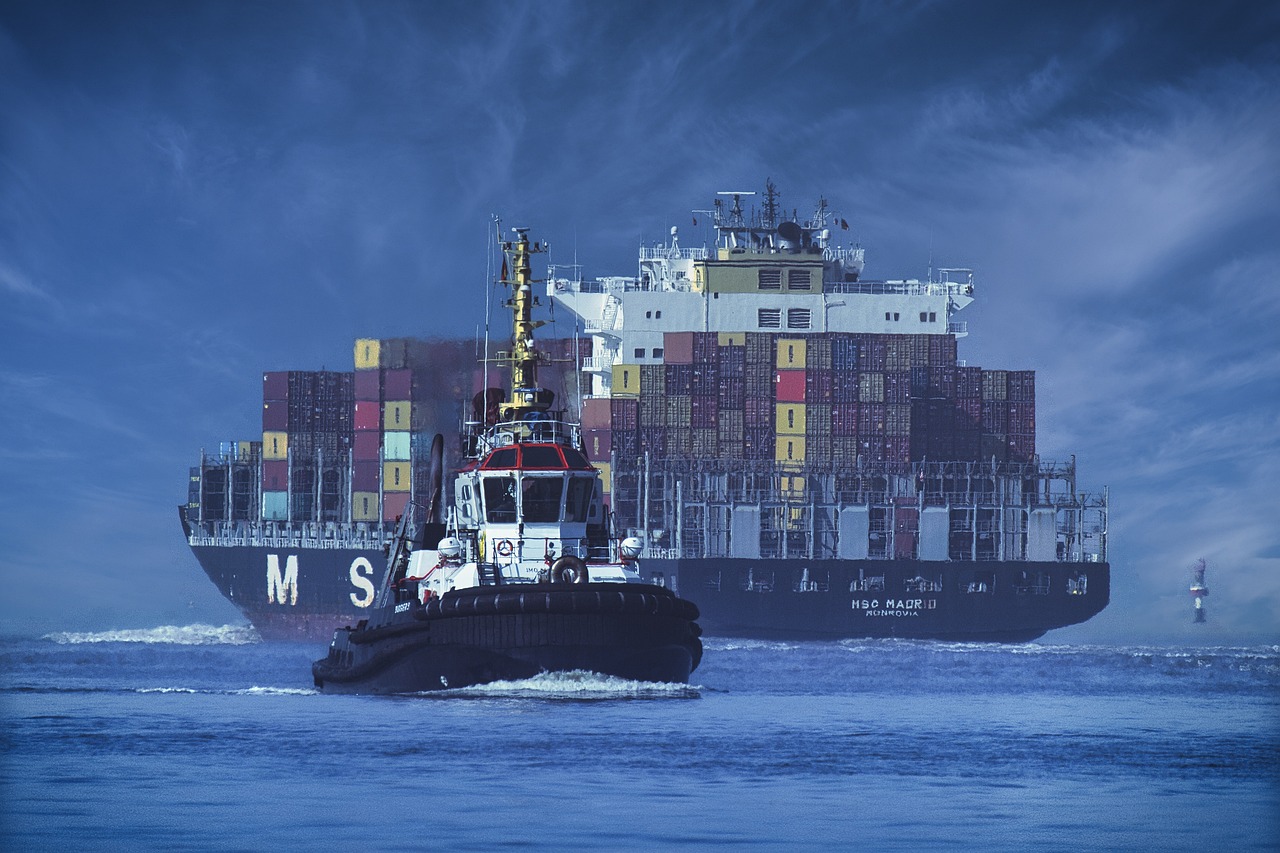Logistics in the Digital Age: Industrial IoT’s Role in Supply Chain

The logistics and supply chain industry is experiencing a transformation like never before, driven by the rise of digital technologies. Among these, the Industrial Internet of Things (IIoT) stands out as one of the most impactful advancements. IIoT connects devices, machines, and systems across supply chains to gather, share, and analyze data in real time, unlocking new levels of efficiency, transparency, and automation. From inventory management and fleet tracking to predictive maintenance and real-time monitoring, IIoT is revolutionizing how goods move from manufacturers to consumers.
This article looks into how IIoT is reshaping logistics and supply chains in the digital age, highlighting its key benefits, real-world applications, and the challenges businesses must overcome to fully harness its potential.
What Is Industrial IoT?
The Industrial Internet of Things (IIoT) refers to the integration of smart sensors, devices, and machinery within industrial systems that communicate and exchange data over the internet. IIoT allows for the automation and optimization of industrial processes by connecting physical assets to digital systems. In the context of logistics and supply chain management, IIoT connects everything from warehouse sensors and delivery vehicles to factory equipment, enabling real-time monitoring, data analytics, and automated decision-making.
The ability to gather and act on data in real time is what makes IIoT a game-changer for logistics. With IIoT, supply chain managers can track inventory levels, monitor shipments, and predict maintenance needs, all while making data-driven decisions that improve efficiency and reduce costs.
Key Benefits of IIoT in Supply Chain Management
1. Real-Time Visibility and Tracking
One of the most significant advantages of IIoT in logistics is the real-time visibility it provides throughout the supply chain. IIoT devices equipped with GPS, RFID tags, and sensors allow businesses to track the location, status, and condition of goods as they move through the supply chain.
For example, smart containers and pallets outfitted with IIoT sensors can track shipments from the moment they leave the warehouse to their final destination. These sensors monitor temperature, humidity, vibration, and other environmental factors, providing real-time data on the condition of perishable goods, pharmaceuticals, or fragile items. If a shipment deviates from the optimal conditions, the system sends alerts, allowing supply chain managers to take corrective action immediately.
Real-time tracking also enhances fleet management. IIoT-enabled vehicles allow logistics companies to track driver routes, monitor fuel consumption, and optimize delivery schedules. Companies like UPS and FedEx use IIoT-based tracking systems to manage their fleets more efficiently, reduce fuel costs, and ensure timely deliveries.
2. Predictive Maintenance and Reduced Downtime
Unplanned equipment downtime can be costly for logistics companies, particularly when it disrupts the flow of goods through the supply chain. IIoT helps address this issue through predictive maintenance, which uses data collected from equipment sensors to predict when a machine or vehicle is likely to fail. By identifying maintenance needs before a breakdown occurs, companies can schedule repairs during non-critical times, minimizing disruptions.
For example, logistics companies use IIoT sensors on delivery trucks to monitor engine performance, tire pressure, and brake conditions. If the system detects an anomaly—such as a drop in tire pressure or an increase in engine temperature—it can automatically alert maintenance teams to take action, preventing a potential breakdown that could delay deliveries.
Predictive maintenance extends beyond vehicles to warehouse machinery, such as forklifts, conveyor belts, and robotic arms. By keeping equipment in optimal working condition, IIoT reduces downtime, lowers maintenance costs, and increases the overall efficiency of the supply chain.
3. Inventory Optimization
Managing inventory efficiently is a critical component of supply chain success. IIoT helps companies achieve inventory optimization by providing accurate, real-time data on stock levels, product movement, and demand patterns.
For instance, smart shelves in warehouses can detect when inventory levels are running low and automatically trigger restocking orders. This reduces the risk of stockouts and ensures that products are always available to meet customer demand. Companies like Amazon use IIoT-driven inventory management systems to maintain high levels of efficiency in their warehouses, ensuring that goods are restocked and shipped promptly.
Moreover, IIoT systems can analyze historical sales data and external factors, such as seasonal trends, to forecast future demand. This allows supply chain managers to adjust their inventory levels proactively, avoiding overstocking or understocking situations.
4. Automation and Efficiency Gains
IIoT enables the automation of many manual processes within the supply chain, resulting in significant efficiency gains. By integrating IIoT with artificial intelligence (AI) and machine learning (ML), companies can automate tasks like order processing, route optimization, and warehouse operations.
In warehouses, IIoT-powered robots work alongside human employees to pick, pack, and sort goods. These robots use sensors to navigate the warehouse, avoiding obstacles and identifying the correct items for shipment. This automation reduces human error and accelerates order fulfillment, particularly during peak seasons.
Similarly, automated guided vehicles (AGVs), powered by IIoT, transport goods within warehouses or manufacturing plants without the need for human intervention. AGVs rely on sensors and real-time data to determine the most efficient route, reducing delays and increasing throughput.
5. Enhanced Supply Chain Resilience
Supply chain disruptions—whether caused by natural disasters, pandemics, or geopolitical tensions—can have a significant impact on business operations. IIoT enhances supply chain resilience by providing real-time data and insights that help businesses respond to disruptions more effectively.
For example, during the COVID-19 pandemic, companies that had IIoT systems in place were better able to monitor supply chain bottlenecks, reroute shipments, and adjust production schedules in response to changing demand and disruptions. IIoT allows supply chain managers to quickly assess the impact of external factors on their operations and make data-driven decisions to mitigate risks.
By providing end-to-end visibility and allowing for dynamic adjustments, IIoT makes supply chains more adaptable to unforeseen events, reducing downtime and minimizing losses.
Real-World Applications of IIoT in Logistics
1. DHL’s Smart Warehouse Initiative
DHL, one of the largest logistics companies in the world, has embraced IIoT through its Smart Warehouse initiative. Using IIoT sensors, DHL tracks inventory, monitors equipment performance, and automates warehouse processes. The company uses IIoT data to optimize everything from energy consumption to workforce allocation, increasing overall efficiency.
DHL has also implemented smart glasses powered by IIoT that guide warehouse workers through picking tasks. These glasses display real-time information about the items workers need to collect, streamlining the order-picking process and reducing the time spent searching for products.
2. Maersk’s Connected Fleet
Shipping giant Maersk has integrated IIoT across its fleet of container ships, using connected sensors to monitor cargo conditions and vessel performance. Maersk’s IIoT system provides real-time data on factors such as temperature, humidity, and pressure inside containers, ensuring that perishable goods like food and pharmaceuticals are kept within optimal conditions during transit.
The data collected by IIoT sensors also allows Maersk to optimize fuel consumption and reduce emissions, contributing to the company’s sustainability goals. By integrating IIoT into its operations, Maersk has improved both efficiency and environmental performance across its global shipping network.
3. Walmart’s Use of IoT for Inventory Management
Walmart, the world’s largest retailer, has deployed IIoT solutions to improve inventory management across its vast network of stores and distribution centers. The company uses RFID tags and IIoT sensors to track inventory in real time, ensuring that shelves are stocked and products are available when customers need them.
Walmart’s IIoT system also helps reduce food waste by monitoring the freshness and expiration dates of perishable items. When products are close to expiring, the system can trigger discounts or donations to ensure they are used before they spoil, contributing to both cost savings and sustainability efforts.
Challenges of IIoT Adoption in Supply Chains
While IIoT offers numerous benefits, there are challenges that businesses must address when implementing IIoT in their supply chain operations.
1. Data Security and Privacy
The connectivity of IIoT devices creates potential security risks, as each connected device represents a potential entry point for cyberattacks. Protecting sensitive supply chain data from breaches, hacking, or espionage is a significant concern, particularly when dealing with customer information or proprietary business data.
To mitigate these risks, companies must invest in robust cybersecurity measures, such as encryption, firewalls, and network segmentation, to safeguard IIoT devices and the data they transmit.
2. Integration with Legacy Systems
Many businesses still rely on legacy systems that may not be compatible with modern IIoT solutions. Integrating IIoT into existing infrastructure can be complex and costly, requiring upgrades to hardware and software systems. The challenge lies in ensuring that IIoT devices communicate seamlessly with legacy equipment, without disrupting existing workflows.
3. High Implementation Costs
While IIoT can deliver long-term cost savings, the initial investment can be significant, particularly for small to medium-sized enterprises (SMEs). Costs associated with purchasing sensors, upgrading infrastructure, and training staff on new technologies may deter some companies from adopting IIoT solutions. However, as IIoT technology becomes more widespread, costs are expected to decrease over time.
4. Data Overload
IIoT generates vast amounts of data, and managing and analyzing this data can be overwhelming. Companies must invest in data analytics tools and AI algorithms to turn raw IIoT data into actionable insights. Without the right analytics
capabilities, businesses may struggle to make sense of the data they collect, missing out on the full benefits of IIoT.
The Future of IIoT in Supply Chain Management
The adoption of IIoT in logistics and supply chain management is expected to accelerate in the coming years. As the cost of sensors, connectivity, and data analytics continues to decrease, more businesses will be able to implement IIoT solutions at scale. Additionally, the integration of 5G networks will enhance IIoT capabilities by providing faster data transmission and lower latency, enabling real-time decision-making across the supply chain.
In the future, we can expect IIoT to play an even more significant role in enabling autonomous supply chains, where self-driving vehicles, drones, and robotics work together seamlessly to transport and deliver goods with minimal human intervention. These autonomous systems will rely heavily on IIoT to communicate and coordinate operations, further improving efficiency and reducing costs.
Conclusion: IIoT and the Supply Chain of Tomorrow
The Industrial Internet of Things (IIoT) is transforming logistics and supply chain management by providing unprecedented visibility, automation, and efficiency. From real-time tracking and predictive maintenance to inventory optimization and enhanced resilience, IIoT is enabling businesses to streamline their operations, reduce costs, and meet the demands of a fast-paced, digital economy.
However, the adoption of IIoT is not without its challenges. Companies must address concerns around data security, integration, and implementation costs to fully realize the benefits of this technology. As IIoT continues to evolve, businesses that embrace it will be well-positioned to build more agile, efficient, and resilient supply chains, ensuring their competitiveness in the digital age.









